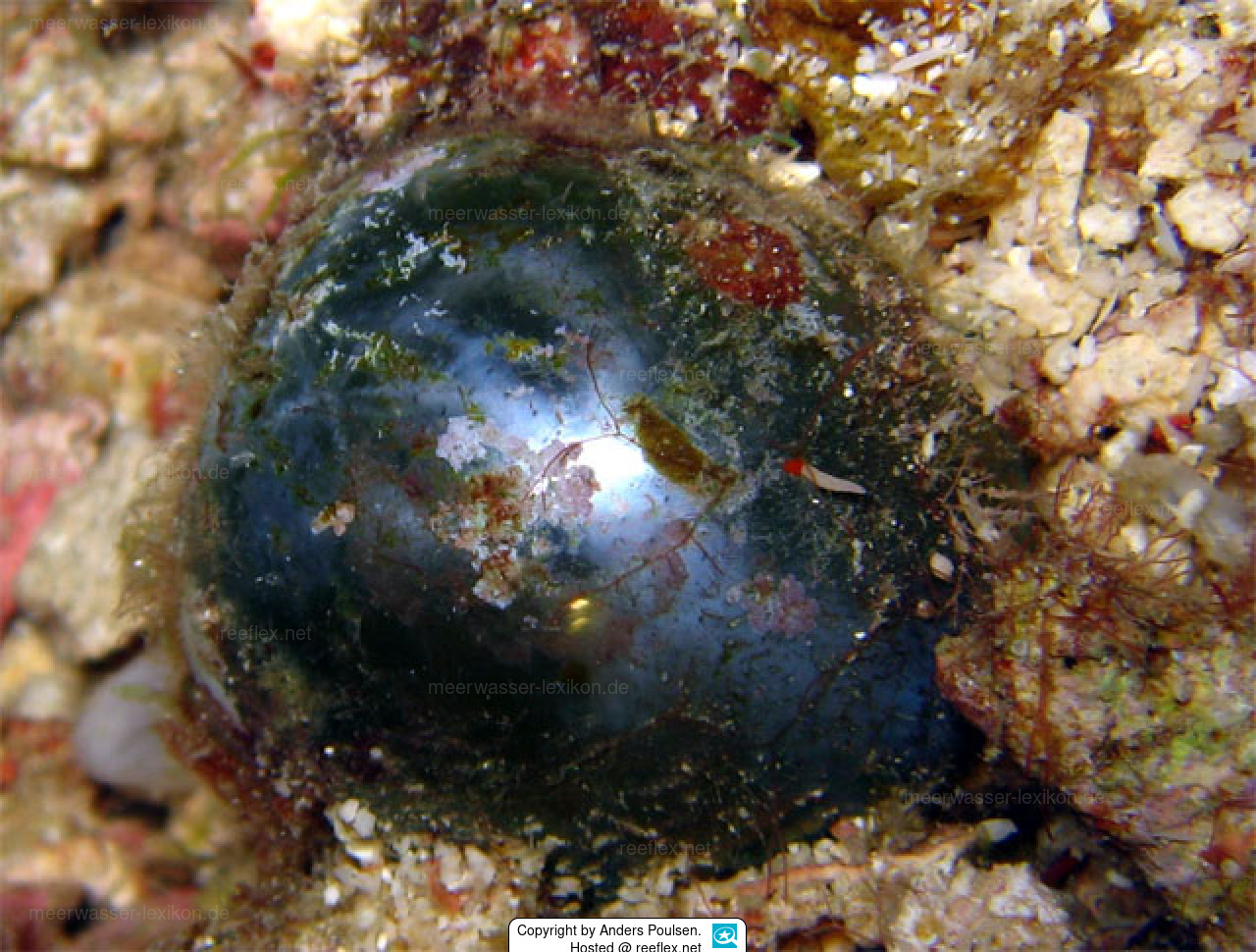Info
J.Agardh, 1887
This species is dark green in color and can develop very large cells (more than two inches) but normally only grows to 0.5 - 2 inch in diameter (one of the largest cells known). They can look like green marbles with a bright reflective glare. It is the bubble algae that we most see in our aquariums.
Classification: Biota > Plantae (Kingdom) > Chlorophyta (Phylum) > Ulvophyceae (Class) > Siphonocladales (Order) > Valoniaceae (Family) > Valonia (Genus) > Valonia ventricosa (Species)
This species is dark green in color and can develop very large cells (more than two inches) but normally only grows to 0.5 - 2 inch in diameter (one of the largest cells known). They can look like green marbles with a bright reflective glare. It is the bubble algae that we most see in our aquariums.
Classification: Biota > Plantae (Kingdom) > Chlorophyta (Phylum) > Ulvophyceae (Class) > Siphonocladales (Order) > Valoniaceae (Family) > Valonia (Genus) > Valonia ventricosa (Species)







 Anders Poulsen, Dänemark
Anders Poulsen, Dänemark























